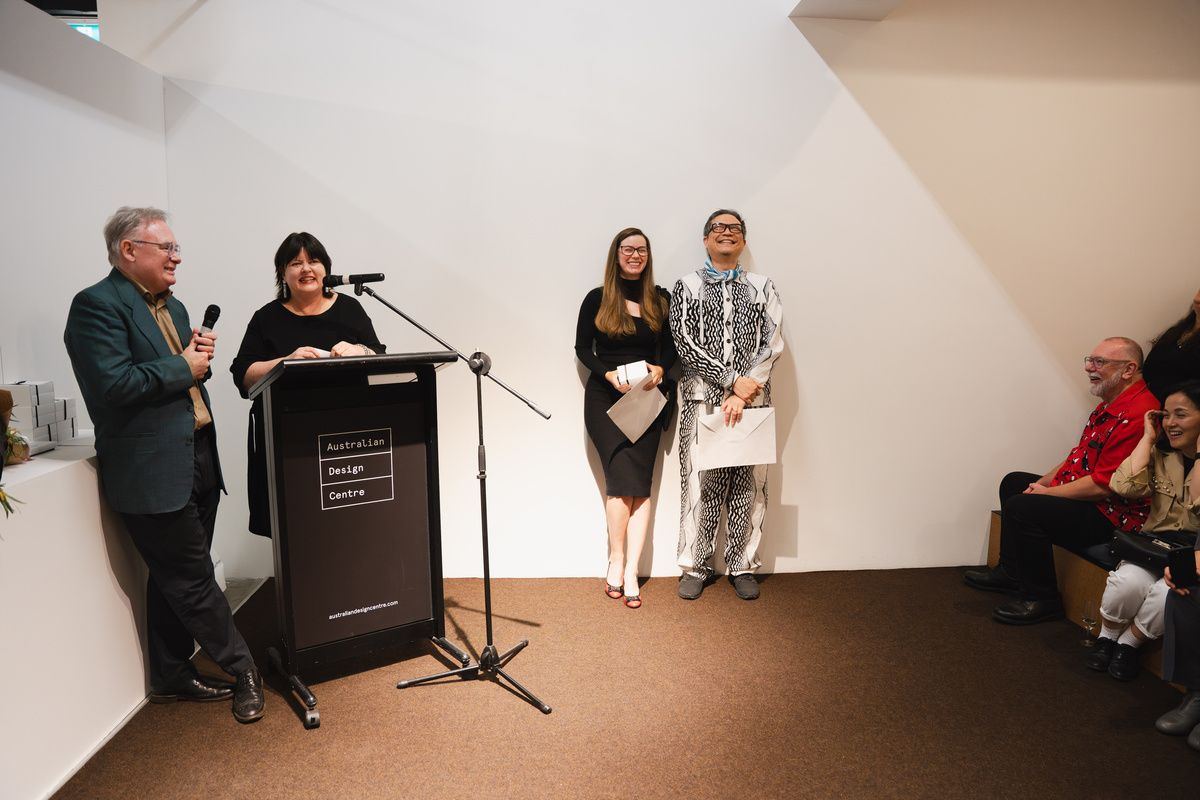Launch Speech by John McDonald

When I agreed to say a few words at the opening of the MAKE award at the Australian Design Centre. It sent me back to the age-old art v. craft debate – a body of thought that requires periodic updating. I can recall the horror with which many artists once used to regard the very thought of “craft”. It was as if someone engaged in a deeply spiritual, highly intellectual process were being asked to rub shoulders with some common labourer who worked all day with his hands.
As cutting edge art became more and more ‘dematerialised’, the gulf between art and craft grew ever wider. When the inevitable happened, and modernism had consumed itself, there was no option but to start making things again.
While this was going on, the so-called crafts people, by which we mean everyone who was engaged in making pottery, glass, textiles, furniture, jewellery, metalwork, etc. were edging their way toward the world of contemporary art. I think it was in the late 80s or early 90s that the Australia Council were putting up funds for writers and curators who could bring a “contemporary” focus to the applied arts. This resulted in a range of publications, a lot of murky theory, and a few adventurous shows, but the bridge between worlds was never completed.
It's only in comparatively recent times that contemporary artists have begun to make ceramics and embroideries as if it were the most natural thing in the world. For many of those seen as leading lights in the crafts world, much of this work appears to be painfully shonky and amateurish. To the artists this is beside the point: they cheerfully disregard the skill factor, embracing the concept behind the work. Indeed, it’s the awkwardness of this work that sets it apart from work made by dedicated craftspeople. The DIY aesthetic is a disavowal of the perceived élitism of the master craftsman or woman.
For the most part this is a harmless affectation that doesn’t affect those for whom skill is a prized asset. The exception may be the strange devolution of the Powerhouse Museum, where there seems to be a plan to treat Australia’s best and most comprehensive applied art collections as mere content for contemporary art installations – as if audiences were unable to look at a pot or a weaving unless it is re-contextualised in some new, arty configuration.
With this in mind, it was both a pleasure and a reassurance, to view the finalists in this year’s MAKE award, and become reaquainted with the skill and perfectionism one finds in the best of the applied arts. In the public mind, there will always be a place for works made with undeniable skill and imagination, because it’s the very lack of those qualities that we feel in ourselves. It’s easy to say “It doesn’t matter”, if you can’t do it yourself, but it’s not at all convincing when you say it standing in front of these pieces.
It's also ridiculous to believe that work described as craft can’t have serious content. Looking around this show I could see comments on the environment, on waste and recycling, consumerism, and much else. As for those entries that are objects of pure aesthetic delight, that’s a raison d’être in itself.
There’s belief that art has to do with the emotions, while craft is a more cerebral affair, but this is a distinction that doesn’t withstand much scrutiny. Craft is often portrayed as a rather grubby commercial enterprise, as opposed to the grand spiritual endeavours of art, but this is a sad comparison when one realises that Damien Hirst has sold thousands of spot paintings for hundreds of thousands of pounds, without ever touching one of them himself. If beauty is in the eye of the beholder, commerciality is in the mind.
Craft, we are told, is goal-directed, while art is open-ended, but that’s another idea that’s hard to sustain. Given the number of wonky pots and embroideries one finds in contemporary art circles, craftspeople might be tempted to say these artworks are ‘failed craft’, just as the most tedious video art is ‘failed cinema’ and the worst performance art is ‘failed theatre’.
Ultimately, I’ve come to doubt that any of the usual art v. craft arguments have much merit. One might just as easily say that ‘art’ is distinguished by a huge investment of ego, whereas ‘craft’ is focused on the object itself. If “making is thinking”, as Richard Sennett puts it in his book of 2008, The Craftsman, then thinking is also making. The power of these works is to be found where concept and execution come together in one seamless exercise, where ‘good enough’ or ‘near enough’, are not permissable. There’s a morality in the making that goes against all the ephemeral, disposable tendencies of contemporary life - an unbroken connection with ages past, when makers had time to create magnificent objects, and the rest of us had the time to appreciate them as they cry out to be appreciated.
This has also been posted, in a different form, as a newsletter on johnmcdonald.net.au, on 2 Oct. 2023
